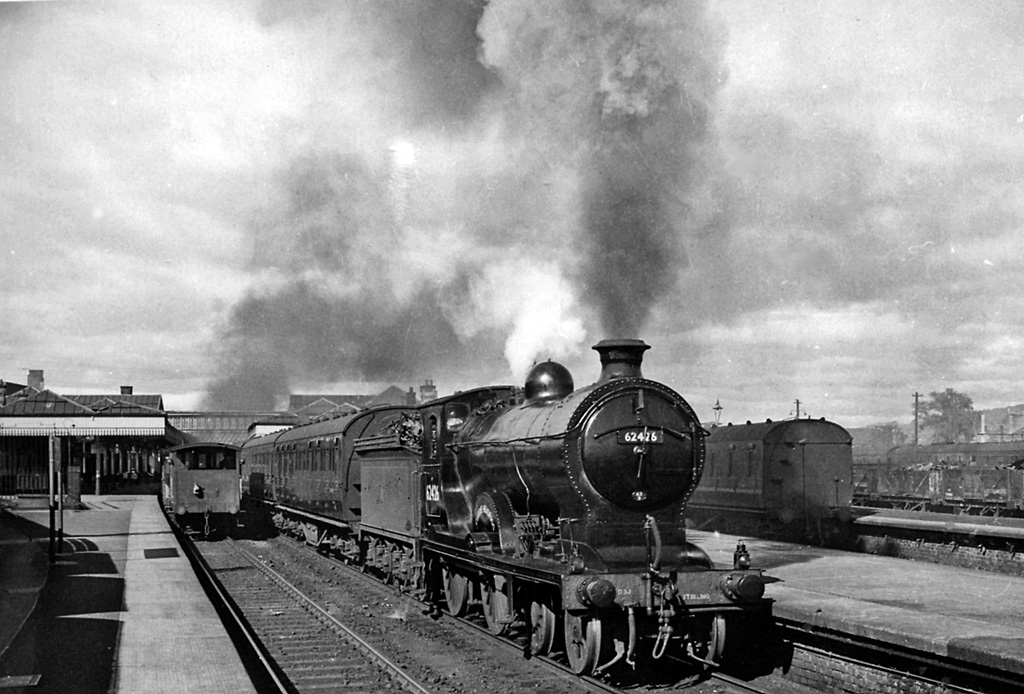|
Balloch Central Railway Station
Balloch Central railway station was the main railway station serving the town of Balloch in Scotland. It was opened on 15 July 1850Butt (1995), page 24 by the Caledonian and Dumbartonshire Junction Railway.Casserley (1968) It was renamed Balloch Central on 30 June 1952. Operations For most of its passenger services, it was the terminal station. A few services, connecting with the steamer services to Tarbet and Inversnaid, continued to . This pattern of service continued after electrification of the line in the 1960s. Between 1856 and 1934, it was served also by trains to/from Stirling over the Forth and Clyde Junction Railway. The main line from just north of Dalreoch Junction was singled in 1986 and thereafter all trains used the former southbound platform up until closure. Closure The station was closed on 23 April 1988 and was replaced by Balloch station, situated immediately south of the level crossing. This relocation allowed the level crossing to be closed.News & ... [...More Info...] [...Related Items...] OR: [Wikipedia] [Google] [Baidu] |
Balloch, West Dunbartonshire
Balloch (; Scots pronunciation: ; Scottish Gaelic, Gaelic: ''Am Bealach'') is a village in West Dunbartonshire, Scotland, at the foot of Loch Lomond. Etymology Balloch comes from either the Gaelic word ''baile'' which means village or hamlet, or the Gaelic ''bealach'' meaning "a pass". Using the former derivation, Balloch means "village on the loch", i.e. the nearby Loch Lomond, but this would be Baile Loch. Geography Balloch is at the north end of the Vale of Leven, straddling the River Leven, Dunbartonshire, River Leven itself. It connects to the larger town of Alexandria, Scotland, Alexandria and to the smaller village of Jamestown, Dunbartonshire, Jamestown, both of which are located to its south. It also borders the Kilpatrick Hills. To the east of the town lies the major local authority housing scheme in the area known as 'The Haldane' or 'The Mill of Haldane'. Glasgow is located around to the southeast. Balloch lies on the 56th parallel north, 56th parallel, at about ... [...More Info...] [...Related Items...] OR: [Wikipedia] [Google] [Baidu] |
Stirling Railway Station, Scotland
, symbol_location = gb , symbol = rail , image = Stirling railway station, frontage, Scotland.jpg , caption = The station frontage , borough = Stirling, Stirling , country = Scotland , coordinates = , grid_name = Grid reference , grid_position = , manager = ScotRail , platforms = 9 , code = STG , years = 1848 , events = Opened , years1 = 1913 , events1 = Rebuilt , mpassengers = , footnotes = Passenger statistics from the Office of Rail and Road , embedded = Stirling railway station is a railway station located in Stirling, Scotland. It is located on the former Caledonian Railway main line between Glasgow and Perth. It is the junction for the branch line to and Dunfermline via Kincardine and is also served by trains on the Edinburgh to Dunblane Line and long-distan ... [...More Info...] [...Related Items...] OR: [Wikipedia] [Google] [Baidu] |
Railway Stations In Great Britain Opened In 1850
Rail transport (also known as train transport) is a means of transport that transfers passengers and goods on wheeled vehicles running on rails, which are incorporated in tracks. In contrast to road transport, where the vehicles run on a prepared flat surface, rail vehicles (rolling stock) are directionally guided by the tracks on which they run. Tracks usually consist of steel rails, installed on sleepers (ties) set in ballast, on which the rolling stock, usually fitted with metal wheels, moves. Other variations are also possible, such as "slab track", in which the rails are fastened to a concrete foundation resting on a prepared subsurface. Rolling stock in a rail transport system generally encounters lower frictional resistance than rubber-tyred road vehicles, so passenger and freight cars (carriages and wagons) can be coupled into longer trains. The operation is carried out by a railway company, providing transport between train stations or freight customer facili ... [...More Info...] [...Related Items...] OR: [Wikipedia] [Google] [Baidu] |
Former Dumbarton And Balloch Railway Stations
A former is an object, such as a template, gauge or cutting die, which is used to form something such as a boat's hull. Typically, a former gives shape to a structure that may have complex curvature. A former may become an integral part of the finished structure, as in an aircraft fuselage, or it may be removable, being using in the construction process and then discarded or re-used. Aircraft formers Formers are used in the construction of aircraft fuselage, of which a typical fuselage has a series from the nose to the empennage, typically perpendicular to the longitudinal axis of the aircraft. The primary purpose of formers is to establish the shape of the fuselage and reduce the column length of stringers to prevent instability. Formers are typically attached to longerons, which support the skin of the aircraft. The "former-and-longeron" technique (also called stations and stringers) was adopted from boat construction, and was typical of light aircraft built until the ad ... [...More Info...] [...Related Items...] OR: [Wikipedia] [Google] [Baidu] |


